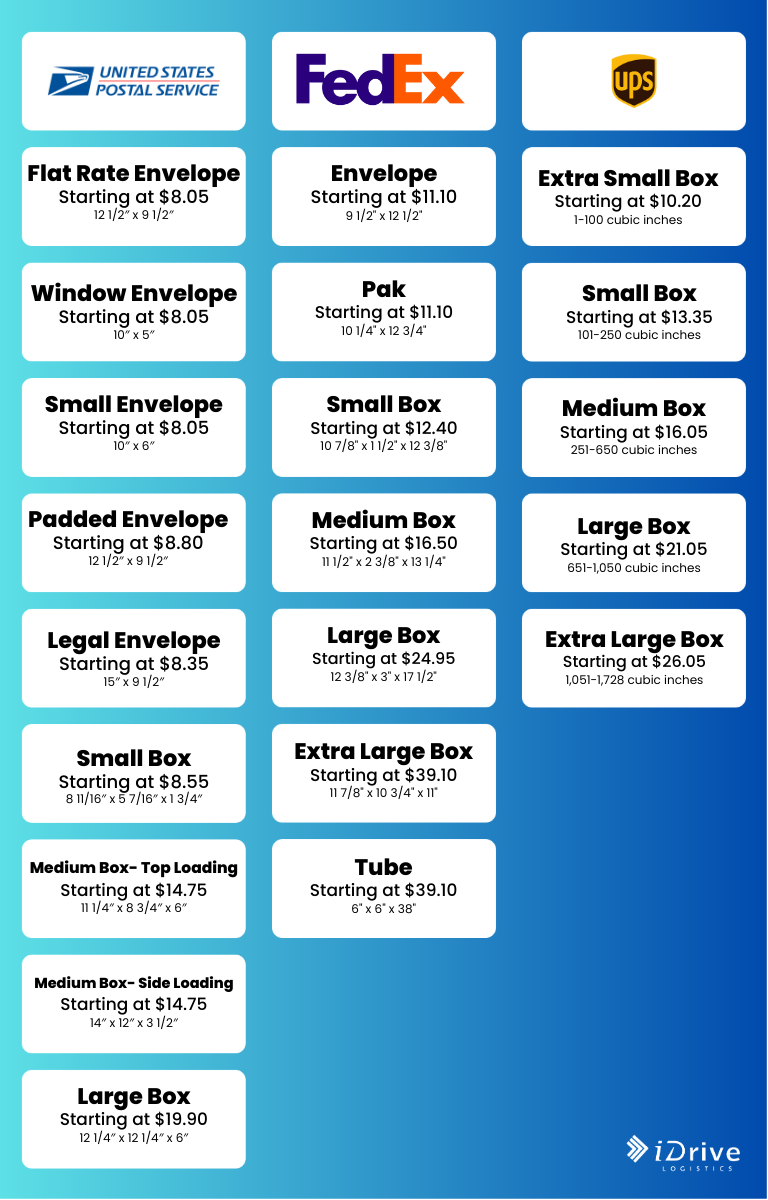A Guide to Flat-Rate Shipping
In this article, we explore the basics of flat-rate shipping, including how it works, its benefits and drawbacks, and when it may be the right choice for businesses looking to optimize their shipping strategy.

Managing the cost of shipping plays an important role in ensuring the profitability and longevity of eCommerce businesses. Opting for flat-rate shipping could be one potential way to cut down on shipping expenses and maximize profits. Flat-rate shipping is offered by USPS, FedEx, UPS, and several regional carriers.
These types of shipping methods charges a fixed shipping rate regardless of the package’s weight. The prices for flat-rate shipping depend on the size of the box or envelope selected, and packages can be tracked and insured for additional fees, making it a cost-effective option for heavier items. Conversely, it can be pricier for lightweight packages.
To determine whether flat-rate shipping aligns with your eCommerce business, you should explore this article to overview the mechanics and advantages of flat-rate shipping and whether it’s a suitable choice for you.
Common flat-rate shipping options

What is flat-rate shipping?
Flat-rate shipping is a shipping service provided by various shipping carriers that offers a fixed shipping cost for packages regardless of their weight. This means that customers can ship as much as they can fit in a specific flat-rate box or envelope for a predetermined price, making it a cost-effective option for heavier items or for those who need expedited shipping. The prices for flat-rate shipping vary depending on the size of the package.
How does flat-rate shipping work?
Rather than a business using their own boxes, shippers must use the shipping boxes the carrier being utilized provides and/or envelopes specifically designated for flat-rate shipping. These boxes are generally offered at local carrier offices (a post office, FedEx location, or UPS location) and include small, medium, and large sizes. The larger the box, the higher the shipping cost, and the maximum weight allowed is 70 pounds.
What are the benefits of flat-rate shipping?
Three main benefits of flat-rate shipping include predictability, convenience and reliability:
1. Predictability: With flat-rate shipping, the cost of shipping is predetermined and fixed, which makes it easier for shippers to budget and plan for shipping expenses.
2. Convenience: Flat-rate shipping offers a level of convenience to shippers because they do not have to weigh their packages or calculate shipping costs based on distance. Instead, they can simply choose the appropriate flat-rate box or envelope and ship their items.
3. Reliability: Flat-rate shipping is a reliable shipping option because packages are shipped using USPS Priority Mail, FedEx One Rate, and UPS Simple Rate, which are fast and reliable services that include tracking and insurance. This can give shippers peace of mind that their packages will arrive at their destination quickly and securely.
Are there any drawbacks of flat-rate shipping?
While flat-rate shipping has its benefits, there are also some drawbacks to consider.
1. Small or lightweight items: If the items being shipped are small or lightweight, flat-rate shipping may be more expensive than other shipping options.
2. Irregular-shaped items: The fixed size of the flat-rate boxes and envelopes may not be suitable for larger or oddly shaped items, which may require custom packaging.
3. Short-distance shipments: Depending on the distance of the shipment, flat-rate shipping may not always be the most cost-effective option, especially if the distance is relatively short.
For eCommerce businesses, reducing shipping costs can make a big difference in profitability and sustainability. Flat-rate shipping can be a practical way to reduce shipping costs and therefore increase profits, particularly for heavier items or expedited shipping. However, it may not always be the most cost-effective option for lightweight packages, large or oddly shaped items, short-distance shipments, or businesses that have a high volume of shipments. By carefully considering the benefits and drawbacks of flat-rate shipping, eCommerce businesses can make an informed decision whether this shipping method is right for them.
If you or your business are looking to optimize your shipping strategy, reduce costs, and improve efficiency, iDrive Logistics specializes in helping businesses of all sizes achieve their goals. If you’re interested in learning more, contact us today!
Related articles
-
Warehouse Management Best Practices: 5 Tips for Optimized Processes
Read moreWarehouses are the heart of many companies, but operations can be difficult to manage. Continual improvement is the best approach to overcoming this challenge. In this article, we’ll discuss the industry’s best practices for warehouses.
-
Prevent Stockouts: 5 Ways to Avoid Going out of Stock
Read morePlenty of businesses have been missing out due to out-of-stock issues over the last few months. So how can you avoid losing money because of out-of-stock problems? One of the best ways is by implementing technology that fosters visibility.
-
8 Effective Ways to Offer Free Shipping
Read moreAmid all the talk of recession and the eye-popping statistics on inflation, many businesses are turning to a strategic focus: customer retention. There are many ways to do this, but one that quickly comes to mind is shipping experience.



